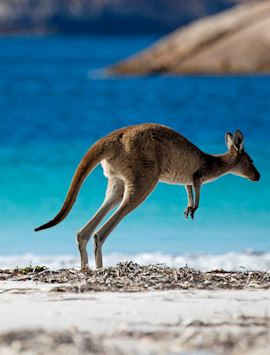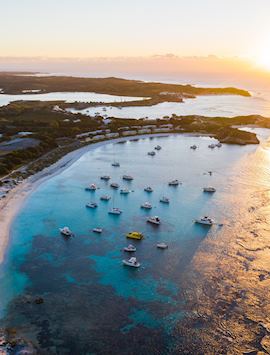By Australia specialist Tom
Fluffy-eared koalas and bouncing kangaroos are the best-known animals in Australia, but there’s so much more captivating wildlife for you to discover.
Australia’s wild islands, lush rain forests, and wetlands all brim with unusual species endemic to this geographically isolated nation. From surprisingly swift wombats to blue-feathered penguins, and playfully splashing (but venomous) platypus, here are my top picks for experiences that will put you up close and personal with the country’s singular wildlife in their natural habitats.
Charismatic quokkas on Rottnest Island
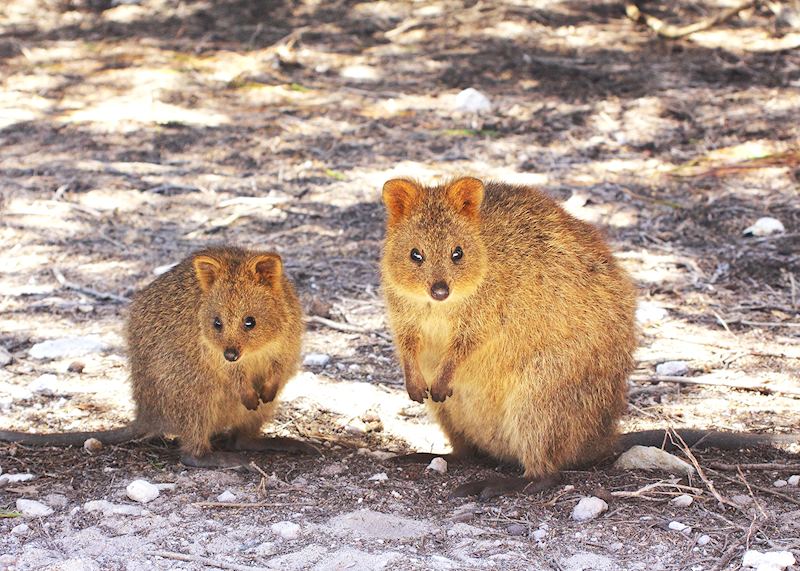
A ferry ride will whisk you from Fremantle in Western Australia to the island of Rottnest — one of just two places in the world to spot quokkas. (There’s also a small colony on the mainland.) Largely undeveloped, Rottnest Island unfurls in shores of white sand and scraggly scrub brush. It’s in the hazel-tinged brush that you should look for the tiny marsupials. I happened to see them in Stark Bay when I visited, but part of the adventure is seeking them out on your own.
The best way to find the quokkas is to rent a bike when you arrive on the island and pedal away from the crowds so you can encounter them unfettered in their natural environment. As you glide along, keep an eye on the water as well — you might spot sharks, dolphins, or even humpback and southern right whales during their migratory period from August to November. Try to head out in the morning at first light or at the end of the day when the quokkas are likely to be scavenging.
Quokkas are renowned for photos that seem to show them posing for the camera, but in truth, they are being tempted by visitors feeding them. They’re natural performers with big personalities, so they’re just as entertaining to view from afar, no luring required.
Get me there: To meet the quokkas on Rottnest Island this tour across Southwest Australia takes in the region’s beaches, wine, and wildlife.
Float with fish on the Great Barrier Reef
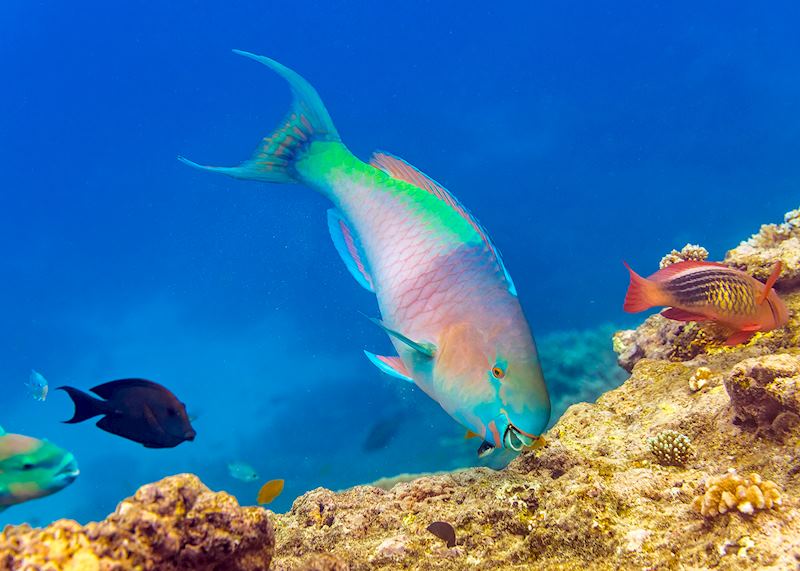
Pulsating with life, the Great Barrier Reef is like an underwater metropolis — filled with knolls of knobbly coral, chandeliers of shimmering anemone, and meadows of cushiony seagrass. And, like all bustling communities, it’s best defined by its eccentric inhabitants, from surfacing green turtles and shy angel fish to swooping sea eagles.
My preferred way of seeing the reef is by catamaran from Port Douglas, a laid-back beach town on the northern Queensland shoreline. Sailing out to sea, you pass the lush coastal fringes of the Daintree Rainforest before (weather depending) heading out to a snow white cay, remotely tucked within the Coral Sea. Here, in the shallow waters, you may spot purple-hemmed giant clams or seabed-skimming stingrays. Then, back aboard the catamaran, you can learn about the reef’s fragile ecosystem and its extensive variety of wildlife with a marine biologist.
If you’d rather keep your feet dry, you can choose to explore the reef further by glass-bottom boat, though I find my best discoveries while snorkeling. I’ve seen brazen barracuda dart around car-sized table coral and neon-spangled parrotfish resting in crystalline cocoons. It’s pure joy watching the colors flitting around the reef — dazzling blues, lively yellows, serene greens — combined with the soft tick-ticking of the snapping shrimp, often the only sound around.
Get me there: Snorkel with the tropical wildlife of the Great Barrier Reef on this family tour of Australia's highlights.
Leap over to Kangaroo Island
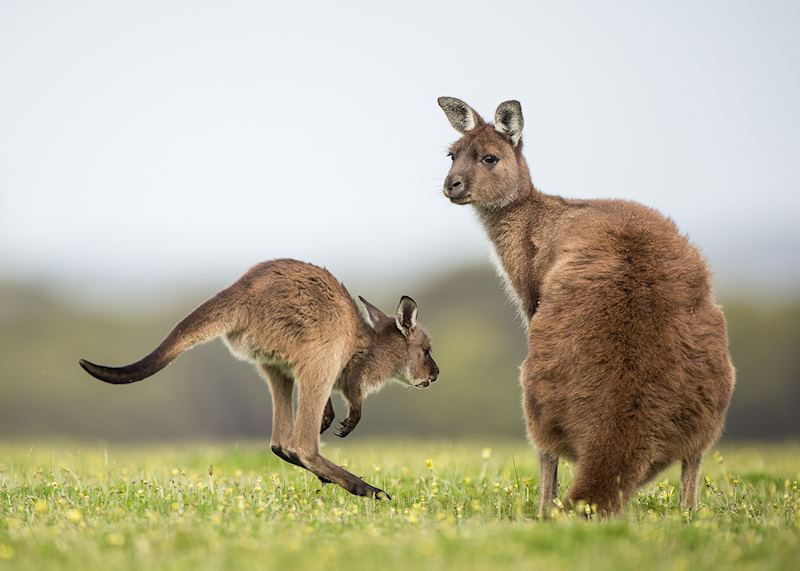
Set off the shores of the South Australia city of Adelaide in the Great Australian Bight, the place to see kangaroos in the wild is on the eponymously named Kangaroo Island. I suggest making your home at the quaint, Tuscan villa-inspired Providence Guest House for a few days, which will give you ample time to see the wildlife. While here, you can soak up the views of granite boulders that line the shores and the raging Antarctic Ocean that lies beyond.
From the kangaroos themselves to the seals and sea lions that reside on wild beaches, the wildlife here lives as nature intended. The kangaroos won’t come hopping up to you waiting to be fed as you might find in other places in Australia. The best way to experience the local wildlife is a tour of Kangaroo Island that starts at the subtly glowing light of early dawn or as the day slowly fades into dusk.
Get me there: Look for cavorting kangaroos on open plains, remote beaches, and eucalypt-dotted islands on a safari tour that takes in the best of South Australia and Western Australia.
Swim with whale sharks on Ningaloo Reef
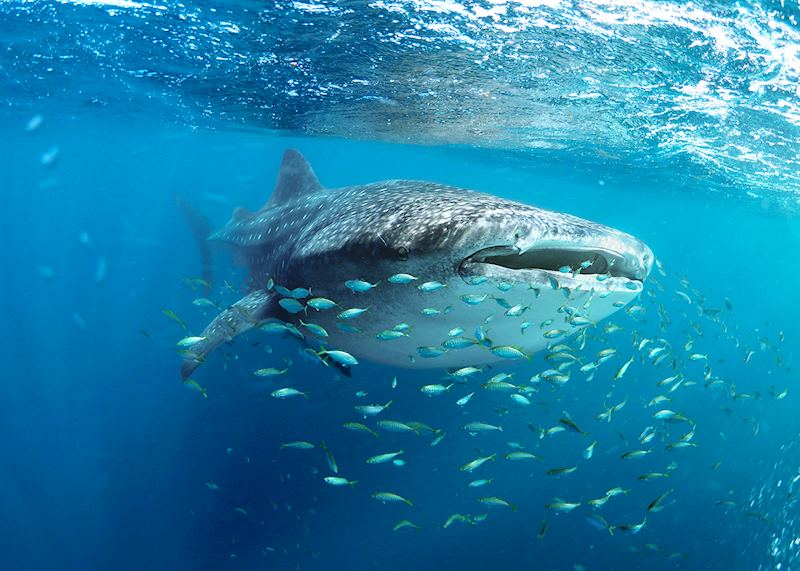
The Great Barrier Reef isn’t the only place to spot kaleidoscopic wildlife in the Australian waters. For a more relaxed experience, I like to visit Ningaloo, a fringing reef on the north west coast of Western Australia. No need to enter the water here — you can see a multiplicity of soft and hard coral right from the white sandy shores.
Although, if you did want to swim or sail out to Ningaloo’s turquoise shoals, you’d be met with schools upon schools of ocean life in the nutrient-rich sea. I love to watch the lionfish floating through fans of soft coral, or float by manta rays as they sweep through sea plankton. But, my highlight on the reef is swimming with the whale sharks.
From late March to August each year, these gentle giants — the largest fish in the ocean — migrate through the reef. Snorkeling near them, you can admire their bluish-white dapple and huge mesh-like mouths as they serenely propel themselves through the waters.
To finish your time at the reef, I recommend a stay at Sal Salas, a safari camp on the sand dunes of Cape Range National Park. In the park, you can see where red-sand deserts and limestone gorges meet alabaster beaches. You can also spot lizards, wallabies, and emus on a choice of walking trails.
Get me there: You can swim with whale sharks and other Ningaloo sea creatures on a wildlife journey around Western Australia.
Wild wombats in Tasmania
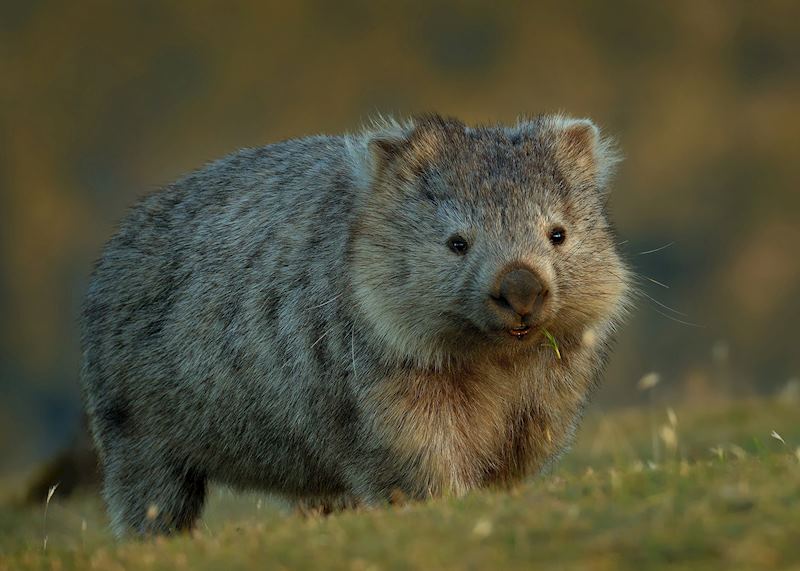
The agile, scurrying Tasmanian devils might be Tasmania’s main attraction, but don’t overlook the other animals that you can find in abundance here, such as the petite but powerful wallabies and the deceptively adorable wombats. The little wombats’ fluffy fur and round bellies belie their sometimes aggressive nature and startling speed — they can sprint almost as fast as Usain Bolt.
The best place to catch a glimpse of these swift creatures is at the foothills of the jagged-peaked Cradle Mountain, where wombats, wallabies, and Tasmanian devils descend across the golden heathlands as the sun starts its descent below the horizon. Like most nocturnal animals, they’re easiest to spot at dusk or dawn, but tours taking place in the black of night are also available.
Sometimes the best way to view them is without a plan at all. Peppers Cradle Mountain Lodge is a lodge nestled in an alpine setting, far from people. It’s wild enough that when you head down to breakfast, you might see sleepy wombats wandering the trails after their active nights out.
Get me there: Discover Tasmania’s untamed wildlife on a trip that takes in Australia’s great walks.
Platypus in the Atherton Tablelands
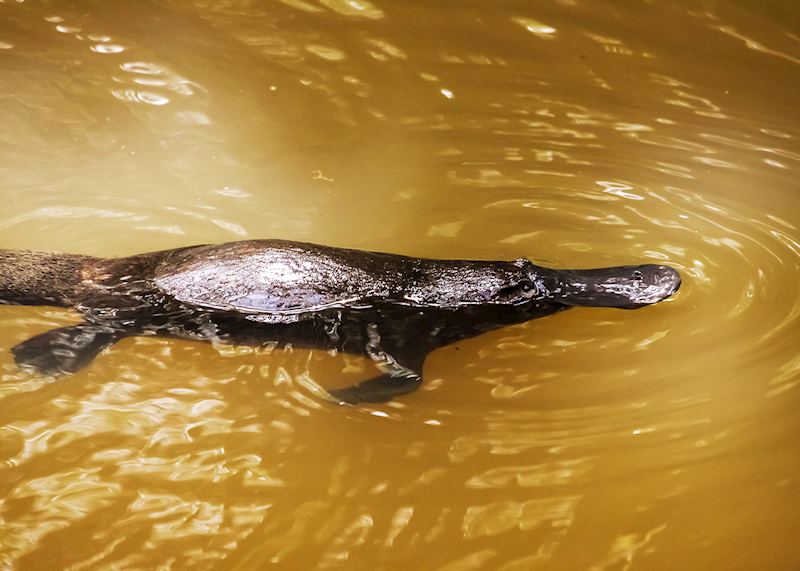
I fell in love with the Atherton Tablelands in Queensland when I first visited years ago. Here, tall-treed rainforest blends seamlessly into verdant wetlands full of birds and wildlife, while open savanna lands stretch out in the distance.
To feel entirely immersed in nature, you can choose to stay in treehouses set high up in the canopy at Rose Gums Wilderness Retreat. Birdwatchers can look to the sky to spot the more than 160 bird species that live here. However, to find a platypus — a mammal you can only see in Australia — look down into the rainforest creeks.
There’s something comical about their big beaks, beady eyes, and flat tails, but the venom these creatures produce is no laughing matter. Hunting and habitat loss have combined to make them a rare sight, so the best way to spot them is with an expert guide who know exactly where to find a paddle of platypuses — the name for a group of platypuses, which comes from its paddle-like tails.
They’re likely to lead you to a spot by the water that looks dirty, scruffy, and remote. Sit quietly and pay close attention or you might miss them when they flip their bills and flick their trademark flat tails, creating ripples over the dark water. I suggest planning a trip in October, when the weather is fine and you’re more likely to catch sight of the evasive monotremes.
Get me there: Our tour to Sydney, Uluru, and the Great Barrier Reef will take you to the wilderness of the Atherton Tablelands.
Spot dolphins in Gulf St Vincent
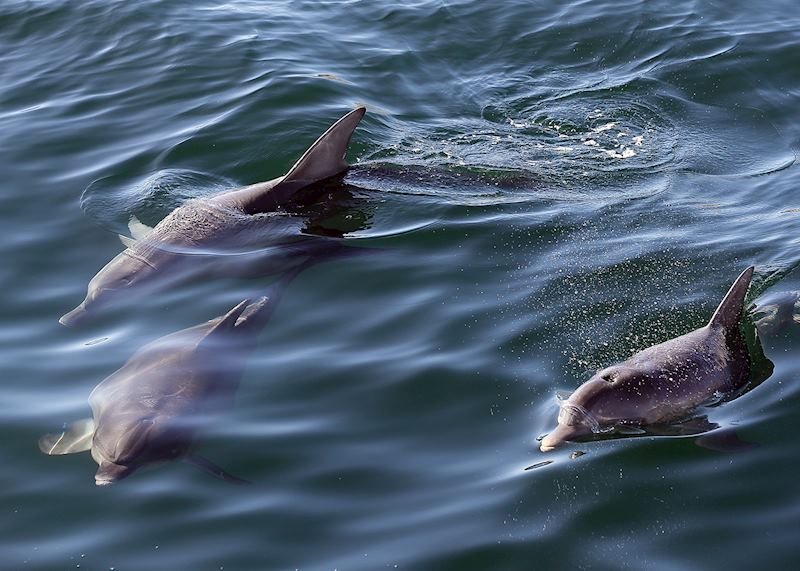
One of the best spots to see dolphins in Australia is Gulf St Vincent, an inlet off Glenelg, Adelaide’s popular beachside suburb. Bordered by magnolia beaches and rich with sea sponges and tunicates, this area of sea is a playground for South Australia’s common and Indo-Pacific bottlenose dolphin populations.
I can arrange for you to see the dolphins up close on a sustainable catamaran tour. From the vessel, you’ll see them surfing the waves, dorsal fins high in the air, and the marine biologists on board will explain the sociable creatures’ habits and lifestyle. You might also have the opportunity to snorkel alongside the dolphins from a net at the front of the vessel and floating ropes at the back. From these, you can hear the dolphins’ clicking communications and watch as they soar in and out of the air.
Get me there: Include a dolphin experience during your time in Adelaide on this eco-friendly tour of Australia’s coasts, outback, and reefs.
Visit Phillip Island to see the little penguins
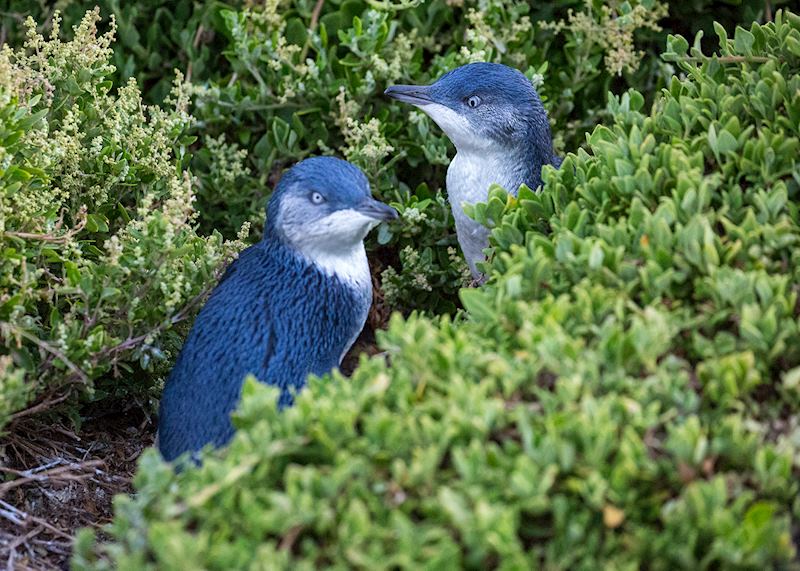
Linked by a road to mainland Victoria, Phillip Island is easy to reach from the buzzing city of Melbourne. Despite this proximity, the island is a haven of nature and quiet solitude, except for the squawks of the more than 40,000 penguins who call the island home. The short and squat species is known as little penguins, an apt moniker for the smallest penguins in the world.
Their icy-blue plumage, which seems especially distinct when their feathers are damp after a splash in the sea, has earned them the fitting nickname of ‘little blue penguins,’ and they are also known by the Māori name of kororā. Whatever you call them, I love watching them waddle out of the sea at nightfall.
Crowds gather at the beachfront Penguin Parade viewing platform nightly, but I can arrange an experience that lets you see them with a smaller group in a much more natural, peaceful environment. They emerge from the water and make landfall on the beach every day of the year, but the best time to visit is between November through March when the weather is warmer.
During the daytime on Phillip Island, you might also spot Australian fur seals warming themselves in the sun on the island’s rocky shores. After getting your fill of wildlife, you could sample the sweet treats at the Phillip Island Chocolate Factory — I can arrange for you to make your own signature chocolates to take home.
Get me there: This itinerary through Southeast Australia affords time at leisure in Melbourne for you to visit Phillip Island.
Croc spotting in Kakadu National Park
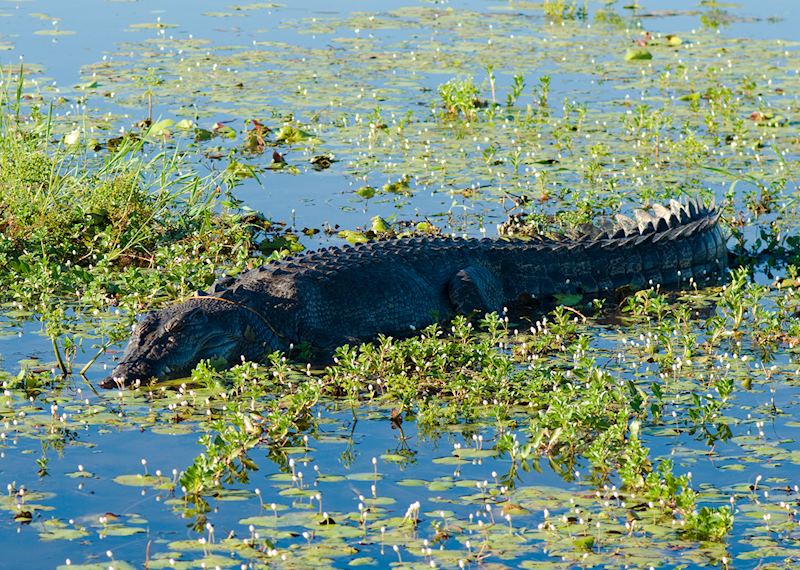
In the far reaches of Australia’s Northern Territory, Kakadu National Park sprawls across the landscape with rugged red cliffs, towering waterfalls, and mirror-like rivers that merge with flourishing wetlands. A UNESCO World Heritage Site, visiting this park is like stepping back in time. You can scrabble up craggy trails to see ancient rock paintings or head out on the water to spot prehistoric-looking crocodiles.
There are more than 10,000 crocs here, including both narrow-nosed freshwater ones and the broad-snout saltwater variety, and there are a variety of ways to see these massive reptiles. However, I think the best one is a boat tour along the Yellow Water Billabong, part of the South Alligator River floodplain.
The best time to see the animals is first light, when the sun crests above the paperbark forests and makes the water glow in an otherworldly light. It’s an early day, but I think it’s entirely worth it to catch a glimpse of these reptiles as they lurk on the muddy banks or glide through the water.
If you prefer to stay on terra firma, I suggest taking a stroll along the boardwalks that cut through freshwater mangroves. When the water levels recede during dry season (April to October), the crocodiles are easier to spot as their territory shrinks away. You can walk across the floodplain to a viewing platform on Home Billabong, listening out for the cry of the plumed whistling ducks.
Get me there: Take a cruise through the Yellow Water of Kakadu with this tour from Darwin to Adelaide.
Marine life around Bruny Island
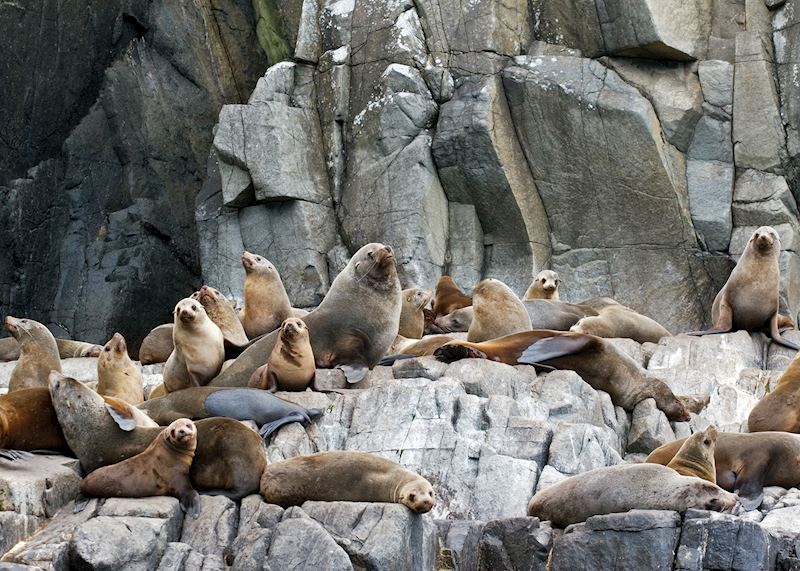
To the southeast of the Tasmanian mainland, you’ll find Bruny Island, a land of contrasting topographies connected by a narrow sandy isthmus. Venture north of this land strip and you’ll see pastures packed with blooming wildflowers. Or, journey south to explore towering cliffs and fern-filled rainforests.
Wildlife thrives on the island’s rugged south, especially birds of prey like the eager-eyed sea eagles, which use the broad-stretching trees and mantel-like crags as their watching posts. I find the best way to see these in action is from the sea, where they soar in and out in great looping dives.
From Tasmania’s capital, Hobart, you can take a day-long cruise around the island’s south. You’ll enter deep sea caves and pass by the craggy Friar Rocks, where colonies of fur seals come to rest. In the water, you might see little penguins and high-spirited dolphins playing — and from May to July or September to November, lively southern right and humpback whales migrate through the Tasman Sea.
Get me there: Our classic tour of Tasmania can include a cruise around Bruny Island.
FAQs
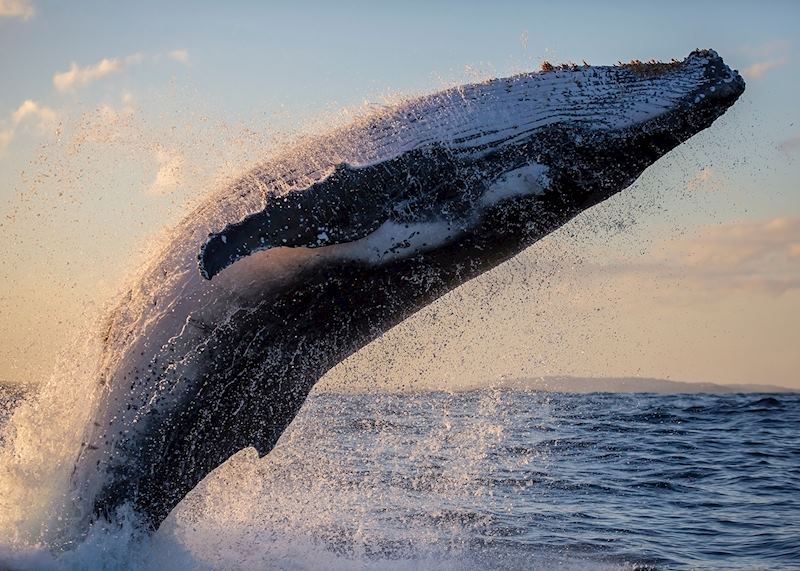
1. When’s the best time to experience Australian wildlife?
There is no one perfect time to experience all Australian wildlife — it depends on several factors, including migration, hibernation, and mating seasons.
You can see kangaroos, koalas, and wallabies all year round, but I recommend visiting in September or October if you want to see joeys. The best sightings also happen at dusk and dawn, as marsupials are typically nocturnal creatures.
Humpback whales and southern right whales only travel through Australian waters during their annual migration period, which is usually June to August, and then again in September to November. Similarly, the best time to see whale sharks is from March to August.
And for those journeying to see lizards and snakes, I recommend visiting in the warmer months from September to April, as they rely on the heat to keep active.
2. What are some factors to consider when choosing a wildlife experience?
You should consider the time of day and year before committing to an experience — some experiences will be teeming with wildlife at certain times and in certain areas, but not in others, so it might be best to choose another activity altogether.
I also recommend checking age and health requirements. Some more active wildlife experiences aren’t open to the very young or elderly and may require a certain fitness or health level. Your specialist will be able to advise you on these.
Lastly, it’s always best to look into the welfare practices of all wildlife-related activities to make sure the activities don’t cause any harm to the animals involved.
3. How can I experience Australian wildlife responsibly? And what can we do to protect wildlife in Australia?
It’s important to keep a safe distance from all animals you encounter, remain quiet and calm, and you shouldn’t feed or touch them. For activities in water, I recommend wearing reef-safe sunscreen, which causes less damage to the reefs and the animals living among them.
When not taking part in wildlife activities, there’s a lot you can do to keep Australia wildlife safe, too. Key for me is making sure you avoid littering and don’t collect shells from beaches, as it can disturb habitats and damage ecosystems.
Read more about wildlife trips to Australia
Start thinking about your experience. These itineraries are simply suggestions for how you could enjoy some of the same experiences as our specialists. They're just for inspiration, because your trip will be created around your particular tastes.
View All Tours in Australia

